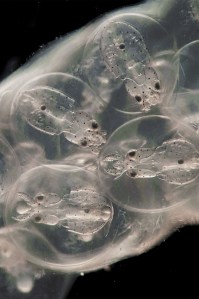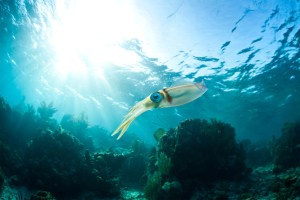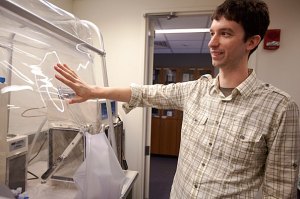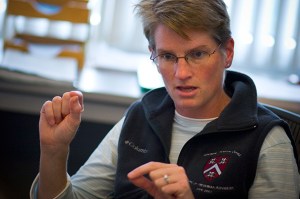Tag: FAS Center for Systems Biology
-

-
Science & Tech
Seeing squid more clearly
Harvard researchers shed new light on squid eye development and convergent evolution.

-
Science & Tech
Tracking an invasive ant species to its native land
Waring Trible’s research took him to Southeast Asia to unravel the origin story of the clonal raider ant, an invasive species found in various parts of the world.

-
Health
Go with your gut
Peter Turnbaugh and co-authors Corinne Ferrier Maurice and Henry Joseph Haiser show that as drugs are administered, the activity of human gut microbes can change dramatically. Understanding how those changes affect drug chemistry could help researchers to design drugs that work more effectively and antibiotics that more specifically target pathogens.

-
Campus & Community
HHMI taps Erin O’Shea
Erin K. O’Shea, the director of the FAS Center for Systems Biology, has accepted the position of vice president and chief scientific officer of the Howard Hughes Medical Institute. She will also maintain her lab and involvement at Harvard.

-
Health
Giving hybrids some respect
Harvard researchers have used genetic analysis to confirm that the Appalachian tiger swallowtail butterfly arose through hybridization of two other species, the Canadian and Eastern tiger swallowtails, highlighting a rare case of speciation through hybridization in animals.

-
Health
Tracking genetic traits over time
Fossils may provide tantalizing clues to human history, but they also lack some vital information, such as revealing which pieces of human DNA have been favored by evolution because they…
-
Health
Light used to map effect of neurons on one another
Harvard scientists have used light and genetic trickery to trace out neurons’ ability to excite or inhibit one another, literally shedding new light on the question of how neurons interact…
-
Health
Caught in the act
Breaking up may actually not be hard to do, say scientists who’ve found a population of butterflies that may be on its way to a split into two distinct species.



